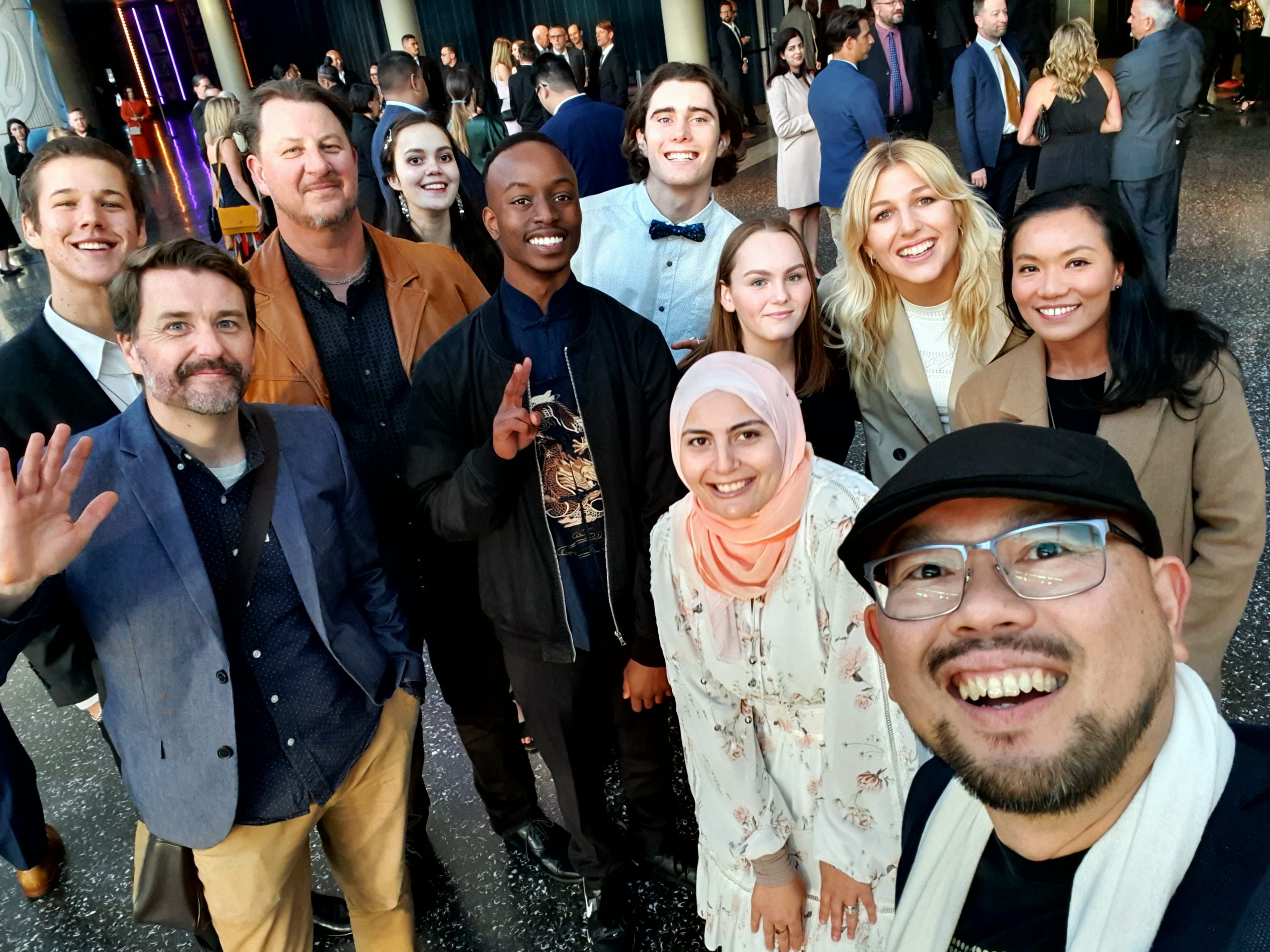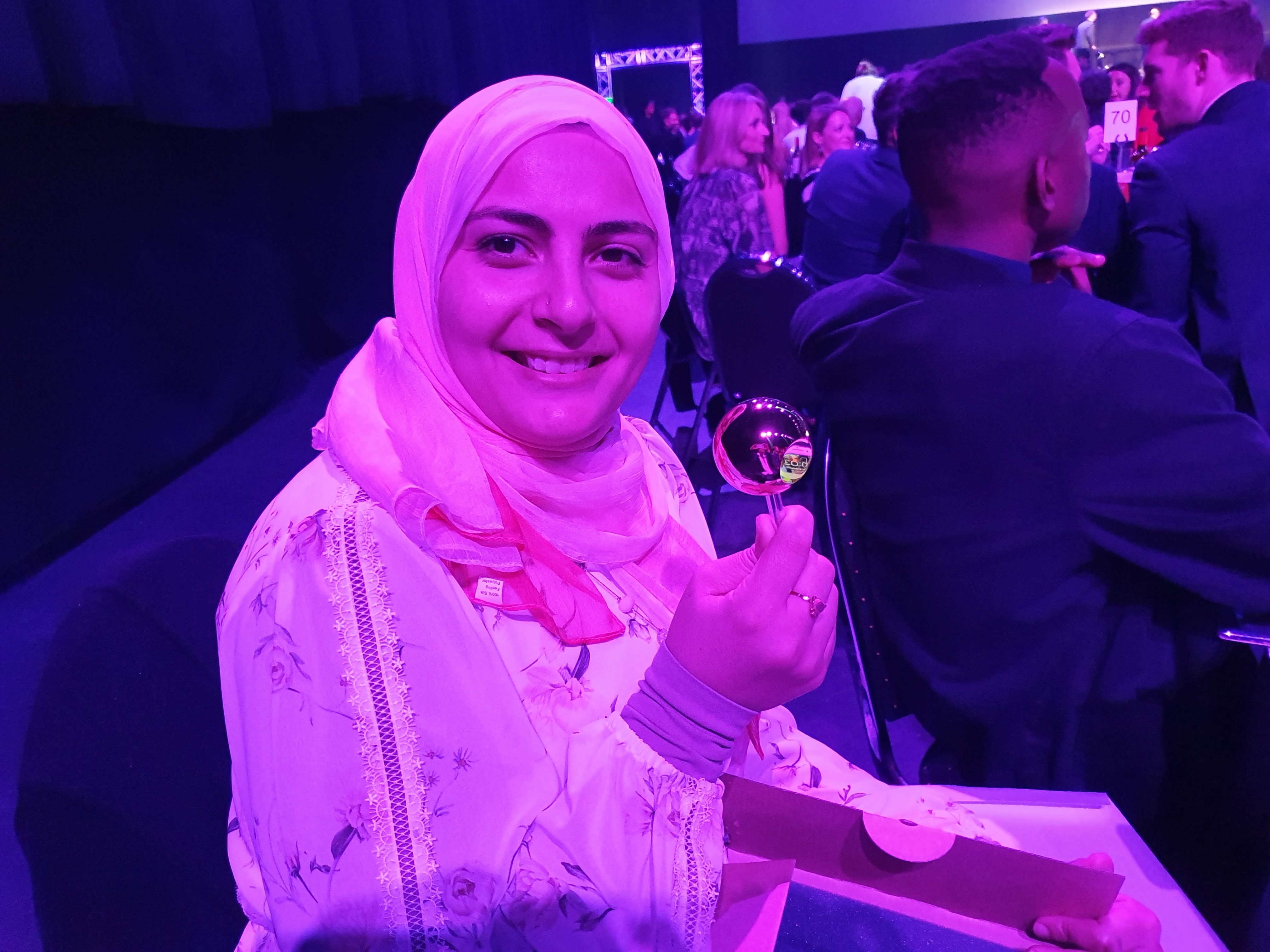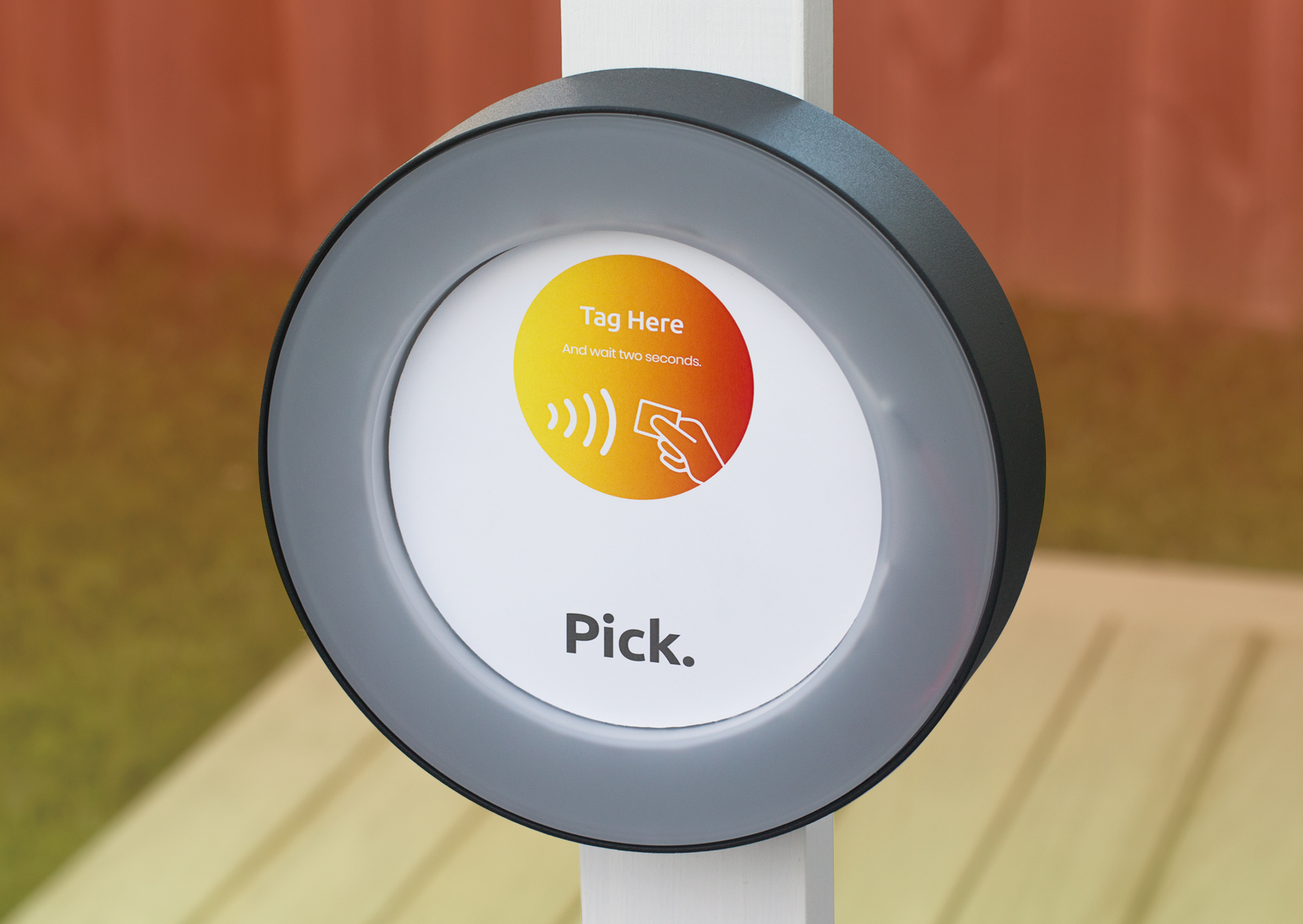MDS students and graduates receive significant recognition at the Best Design Awards 2019

Media Design School (MDS) students and recent graduates received significant recognition at the Best Design Awards 2019 for their designs that assist people with a disability travelling on public transport; the creation of an urban kauri forest experience during Conservation Week; and a design-led solution to attract volunteers to the Auckland Art Gallery. The students and alumni enjoyed success taking out gold, silver and bronze awards at the Awards gala in Auckland on Friday night, with one project, Pick, taking out three awards.
The Best Design Awards have been run by The Designers Institute of New Zealand for over 30 years are highly prized by industry and the design community. They’re open to industry professionals and students and are judged by highly respected industry professionals over seven days of judging. Award categories cover graphic, spatial, product, interactive and motion design along with four boutique awards under professional and student categories.

The MDS winners and their projects included:
Gold Award – Student Interactive award for: Pick
Student (now graduate): Mona Gabr (pictured above).
Gabr graduated last year and is now working as a UX designer at Satellite. She created the Pick project in her third year of study.
“Pick” is a prototype tag system that provides assistance to people with disability when catching the bus on public transport. The system allows communication between the individual and the bus drivers by using near field communication (NFC). This NFC system helps ensure that the passenger gets on the right bus. According to Statistics NZ, 35% of people with disability are over 65 years old and may not have access to a smartphone, hence the tag system rather than a mobile app.
Though this project, Gabr gained a real insight into the problems that people with disability encounter with our public transport system. She wanted to develop a human-centric solution, therefore a strong emphasis was placed on primary research alongside engaging with key stakeholders including, The Blind foundation, Blind citizen, Auckland transport, NZTA innovation team, Be accessible and 10 Bus drivers. Gabr says she was surprised to find that although that solutions had been developed overseas, no one was looking at providing a New Zealand centric solution. She followed a Lean UX methodology by looking at a producing a MVP (Minimum Viable Product) and validating it with users, then analysing the feedback to make changes in the product.

Silver Award – Nga Aho Design with Maori Focus award for: Kauri Lounge
Students: Donald Mavunga, Sameera Khan, Robert Barrington, Andrew Eiserman, Jaromme Lawn, Mitchell Starns, Adam Small. (Year two project, students now in year three)
Project overview:
Kauri are a unique Aotearoa taonga, but they are dying. With no cure, kauri dieback disease is threatening Kauri with extinction. We must save them. As a group of interactive design students, we received an open brief to create an urban kauri forest experience in the Ellen Melville Centre in the Auckland CBD for Conservation Week 2018 to raise public awareness of the devastating impact of kauri dieback. The project began as a collaboration with the Ellen Melville Centre and Auckland Council Biosecurity but grew organically to include our school’s Kaitakawaenga, The Kauri Project, Auckland City Parks, Auckland Council Activations, The Arataki Visitors Centre, The Council Printroom and Conservation Week.
Our idea was to create an immersive interactive multi-sensory forest experience that was sensitive to and reflective of the cultural significance of Kauri to Māori. We wanted to tell the story of Kauri – from its cosmological beginnings in the parting of Ranginui and Papatūānuku, through its mass destruction, its conservation and regeneration, and now the new threat from kauri dieback disease.
Following design thinking, UX design and agile development approaches, we worked closely with our lecturers, our Kaitakawaenga, the client and the other collaborators in weekly design sprints involving rapid prototyping, testing and whakawhānaungatanga. The project included the projection-mapping of forest images onto a wooden-slat wall, printed floor-to-ceiling banners telling the kauri story, kauri tree models, live native plants, ambient interactive birdsong, a virtual reality experience of the Waipoua Forest and a touch screen information kiosk. We also created a visual identity for promoting the project.
During Conservation Week, lunchtime talks were given by leading scientists, artists and activists; and we also attracted the attention of Māori TV who aired a news segment featuring interviews with two of our team.

Silver Award – Student Public Good Award: Mona Gabr for Pick (project overview as per above).
Silver Award – Student Interactive Design award for: Tohu
Students: Rose Norgrove, Holly Schroder, Alistair Kincaid (current year two students)
Project overview:
After we were briefed by Auckland Art Gallery (AAG) about their need for more volunteers, our team analysed and addressed the underlying challenges – unpacking the brief to create a design-led solution.
AAG wanted volunteers with “something to bring”, and as such we wanted to identify desired traits through our campaign – ensuring all applicants develop an understanding of the gallery’s expectations. Also, there is a significant lack of awareness around the volunteering programme, and research suggests those most suitable for the role (e.g. Visual Arts students in Auckland universities) are incognisant of it. As such, we designed a campaign which prioritises sharable design. Lastly, an emphasis was placed on diversity – most notably in reference to age – so we were led to consider younger demographics, of which there is a prominent scarcity in the programme. We addressed this by studying young people’s behaviour and trends, and adopted social-media based campaign methodologies.
Our solution is ‘Tohu’, which by definition means to instruct, advise, guide, direct, appoint. ‘Tohu’ celebrates individual strengths, and connects art enthusiasts with appreciable traits to the volunteering programme. ‘Tohu’ involves an interactive personality quiz which shows users the famous NZ artist they are most alike. This quiz is brought to life with motion elements, CSS animations and Javascript, to ensure an exciting and memorable experience for the user. We focussed on cohesiveness, and incorporated similar elements throughout the collateral. This includes an “infinity zoom” effect, which was animated in our motion piece, and recreated with javascript in our results pages. This challenged us to adapt a non-interactive effect into an interactive webpage, with the zoom controlled by the user’s scrolling. Thematically, this quiz appeals to art enthusiasts, whom we identified as being more likely to possess a genuine passion for the volunteer role and gallery.
The user is shown the positive traits they share with the artist, followed by a call to action, in which they are encouraged to share these strengths by volunteering at the gallery. This is shown to be incredibly effective because of the self-serving bias. Following this, the user is prompted to share their result on social media – incentivised by the chance to win a free membership at the gallery. The invitation to join ‘Tohu’ leads to an informative website, which outlines the perks and expectations of volunteering. A set of collateral was designed to accompany this campaign, including a notebook pack, customised to the applicant’s quiz result. Each stage of the ‘Tohu’ experience has been thoughtfully crafted and designed to achieve our end goal – reaching a wide array of people and incentivising them to join AAG’s volunteering programme.

Bronze – Student Product Award for: Mona Gabr for Pick
Jim Murray, lecturer and program coordinator for Design-Graphic at MDS said success at the awards was important for the students and faculty as a whole.
Says Murray: “Achieving Gold and Silver for interactive design was a great accomplishment for our Bachelor of Media Design Students and our faculty. I’m particularly proud of the Ngā Aho and public good awards, these awards demonstrate a collective focus by MDS to embrace here for good projects.
“Seeing our students work on the huge screens inside the monumental vector arena, having their hard work recognised and knowing that these awards will make a meaningful difference to their future careers was priceless.”
